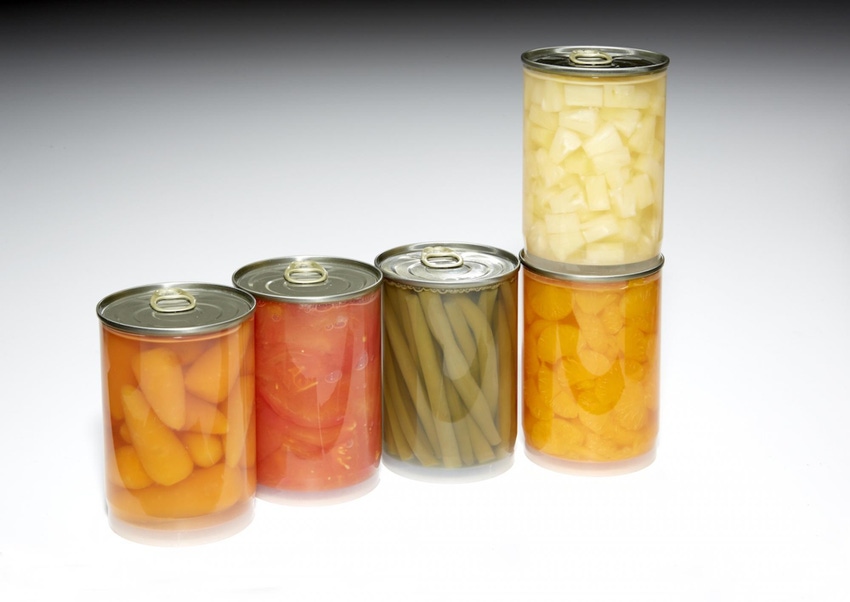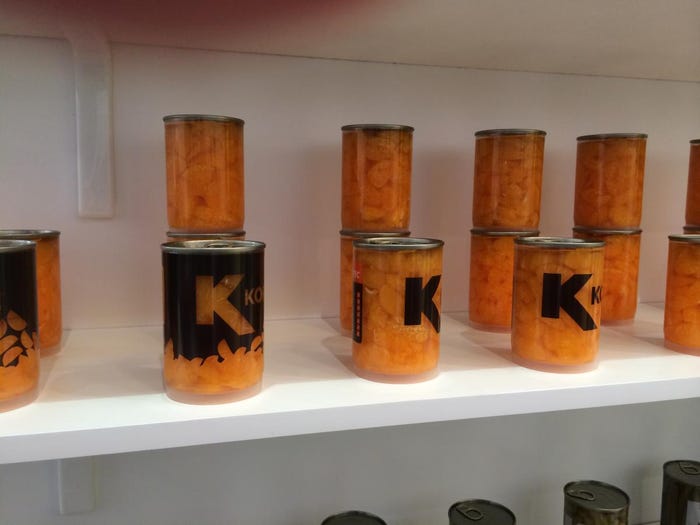Introducing see-through plastic cans: what you see is what you get
Dusseldorf, Germany — A new multi-layer co-injection technology from Kortec Inc., allows the production of clear PP plastic cans for food packaging. The new packaging was introduced by Kortec, the innovative co-injection system supplier acquired earlier this year by Milacron, at Interpack 2014, in Dusseldorf, Germany. According to the company, the new technology offers an ideal alternative for fruits, vegetables, soups, meats, and other products, as well as offering numerous advantages over metal cans.
May 13, 2014

Dusseldorf, Germany — A new multi-layer co-injection technology from Kortec Inc., allows the production of clear PP plastic cans for food packaging. The new packaging was introduced by Kortec, the innovative co-injection system supplier acquired earlier this year by Milacron, at Interpack 2014, in Dusseldorf, Germany. According to the company, the new technology offers an ideal alternative for fruits, vegetables, soups, meats, and other products, as well as offering numerous advantages over metal cans.
 The 'Klear Can' multi-layer plastic cans offer an attractive alternative to metal cans by providing brand owners with a clear, see-through PP container that features extended shelf life of up to five years. Consumers are able to judge the quality of the food products at the point of sale. Moreover, the new product is designed with metal can ends for easy opening, which are hermetically sealed to the plastic can. The stackable design features a three-layer plastic construction (PP outer and inner layers, with an EVOH barrier) for shelf life up to five years, is BPA free and offers options for colored plastic cans, in-mold labels, or standard labels.
The 'Klear Can' multi-layer plastic cans offer an attractive alternative to metal cans by providing brand owners with a clear, see-through PP container that features extended shelf life of up to five years. Consumers are able to judge the quality of the food products at the point of sale. Moreover, the new product is designed with metal can ends for easy opening, which are hermetically sealed to the plastic can. The stackable design features a three-layer plastic construction (PP outer and inner layers, with an EVOH barrier) for shelf life up to five years, is BPA free and offers options for colored plastic cans, in-mold labels, or standard labels.
Additionally, Klear Can has been designed such that existing metal can-filling facilities can easily shift to the use of the plastic cans, with no need for investing in new downstream equipment.
"These plastic cans use the same steel or aluminum can ends, same filling equipment, same seaming equipment, and the same retorting and cooling equipment," said Russell Bennett, Kortec VP of sales & marketing. "For the canner and the brand owner, there is no need for significant modifications over what happens today. We see this as a major advantage."
And consumers? According to Bennet, consumers really like the look of the new cans. "The response from the industry and from consumers has been overwhelming," he said. Plus, the new plastic cans apparently offer another, highly unexpected advantage: in some countries, people are recycling them as drinking glasses. "They cut off the metal rim, smooth down the edges and reuse them to drink out of," said Bennet.
The cans have been tested and approved for both retortability (up to 130°C, 265°F) and the integrity of the double seam, which was designed to allow the plastic can's flange to accept traditional (easy open and non-easy open) metal can ends.
The first Klear Can introduction here at Interpack is the commonly used 41cl size, with a 75mm end, also common. The total can height is 110mm. Kortec is ready to work on alternate size cans with companies who require something other than this initial 41cl size.
About the Author(s)
You May Also Like


